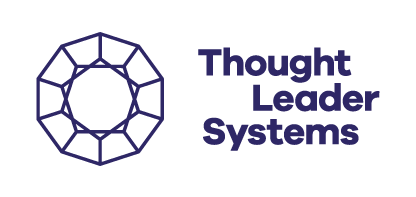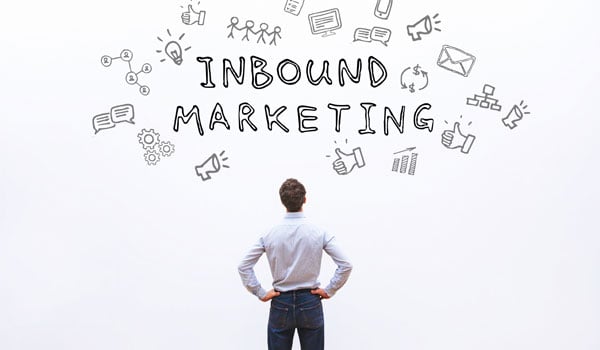The fact that you are reading this blog post means that you have heard of inbound marketing and are ready to give this marketing technique a chance. Let's start with the definition of inbound marketing. What exactly is it?
The goal of inbound marketing is to increase visitors' attention to your website. It helps your startup or business to be found more easily on the World Wide Web. You want to direct potential customers to your blog or website through interesting and high-quality content.
This marketing technique is about attracting potential customers to you by using marketing channels and tools, rather than the other way around, as is still common today. You no longer have to fight for attention!
As the name suggests, inbound marketing is the exact opposite of outbound marketing. However, this does not mean that these two marketing techniques don't need each other to be successful.
Outbound marketing is about bringing the product, service, or solution to the potential customer, whether through PPC or ads. With inbound marketing, the goal is the exact opposite – bringing the potential customer to the product!
Inbound is the strategy of connecting with customers through content that they find useful. Unlike outbound marketing, where the user is "interrupted" by ads, inbound marketing leads them to you through high-quality content.
Now that we understand the basics of inbound marketing, let's turn to the four phases of inbound marketing, which will transform your prospects into satisfied promoters. You need to help your product be sought, used, and purchased – the focus of a good inbound marketing strategy. Inbound is a process in four phases: Attract – Convert – Close – Delight.
I believe that an inbound marketing strategy should be implemented as early as possible! The larger the company, the more complex it becomes!
The First Phase of Inbound Marketing | Attract
The first step in Inbound Marketing is to generate/attract visitors. When I say visitors, I mean qualified and relevant visitors. This phase is called the Awareness Phase or Discovery Phase. But how do you generate/attract relevant traffic as part of your Inbound Marketing strategy?
You should always think like your target customers. Your target customers are defined by demographic criteria such as gender, age, place of origin, language, background, income, profession, and behavior. By knowing your target customers, you can create exactly the content that is relevant to them. Additionally, you will know exactly through which social media channels the content needs to be promoted. The best way to determine your target customers is to create Buyer Personas.
Was ist eine Buyer Persona:
A buyer persona is an avatar, a caricature, a stereotype, a fictional character of the perfect customer. What should a buyer persona include?
- An identity that matches the demographic criteria.
- Characteristics and behavior patterns.
- Leisure activities.
- Media they consume.
Here, you want to know exactly how your target customer is influenced, directly or indirectly. - Personal goals: Here you need to ask what the needs of your buyer persona are. What motivates them? How can these needs be fulfilled? What is your target customer thinking about? What path will they take?
Now that you have created the user/buyer personas, you should use the following online channels to attract visitors to your website..
Create a blog
Storytelling has always existed, especially in content marketing, but this technique has now evolved. Nowadays, the best online channel to tell your story is a blog.
Starting with a blog is often the first step in inbound marketing. Blogging is a great way to attract new visitors to your website. To be found by the right prospects, it's essential to create content that engages with them.
Inbound marketing is nothing without content!
Answering the potential questions of your buyer personas (potential targets) through blog posts is a good start to generate their interest in your website. There are many content marketing tactics you can use to help your blog achieve the desired success.
In addition to your blog, you can create landing pages to generate even more visitors.
Understand and Use Good SEO (Search Engine Optimization) Techniques
The prospect (your target) will most often use a search engine (Google, Bing, Yahoo) to find answers to their questions. You need to ensure that you are present in the SERPs (Search Engine Results Pages) when they search for answers. To ensure this, you must:
- Identify the right keywords
- Optimize your webpages
- Make navigation within your blog as simple as possible
- Improve website speed (load time optimization)
- Create content that sparks interest or answers potential prospects' questions
- Optimize internal linking
- Develop a link strategy
Social Media as a Traffic Boost for Your Inbound Marketing
An inbound marketing strategy that works and succeeds is the result of high-quality content. Social media channels will allow you to interact effectively with your target audience and community through this content.
To optimize your publications, you need a strong presence on the relevant social media channels. A well-thought-out social media strategy for the company, especially for startups, is crucial!
You need to share your content on the right social media channels. How do you find the right channels?
It's simple: the right channels are those that your buyer personas use.
Write E-Books
E-books are a fantastic content marketing format, and I believe they are still underutilized. This format allows you to build your thought leadership and generate qualified leads. You can enhance your expertise, provide insights, and address specific questions in detail.
The downloadable e-book on your blog or website is one of the most effective formats, if not the most effective, for gathering valuable information from/about your visitors.
Utilize Webinars – Stop Writing and Start Speaking
Be always nice;), show your face, and you will delight those who read your blog posts and newcomers. A webinar, also known as an online conference, will not only enhance your credibility but also improve your reputation. You have demonstrated your expertise through blogging, and your prospects will love asking you questions in real-time, to which you, ideally, will have suitable answers.
This will make you more human!
You need to have an email strategy / Send a regular newsletter
The goal of email marketing is to maintain constant contact with your target audience, prospects, and customers, encouraging them to visit your website. Ideally, they are already visiting your website regularly. Using emails is also a good way to warm up those few prospects who do not have the habit or time to visit your website.
The key to a successful email marketing strategy is a newsletter!
The newsletter must be sent out at regular intervals (once a week or twice a month). Do not send too many emails to your subscribers, as you do not want to annoy them. An email marketing strategy is a key element for successful inbound marketing.
Conclusion of the First Phase
Now that you have a list of ideas to help expand your target audience and understand the first phase of inbound marketing, you can also become creative and discover new types and formats to support traffic generation. Good opportunities to attract additional visitors include:
- Surveys
- Case Studies
- Videos
- Infographics
- Interviews with Influencers
- Podcasts
Implementing these tools, combined with thorough and regular effort, will ensure that you can move on to the second stage of Inbound Marketing: the Inbound Marketing Process.
Now let's turn to the second step: Conversion!
The Second Phase of Inbound Marketing: Conversion
To convert traffic into leads, it is crucial to focus on quality content rather than quantity. You need to create a marketing strategy! By regularly publishing relevant content, you attract new visitors and simultaneously build trust.
It would be unwise to stop here!
In the conversion phase, various techniques can be used to capture relevant data from your prospects. The conversion phase, also known as the value enhancement phase, is largely synonymous with lead generation.
How do you successfully generate leads?
Lead Generation through CTAs (Call-to-Action
CTAs (Call-to-Action) or buttons are visually designed links that prompt your readers to interact with the website. They push your readers further down the rabbit hole.
CTAs are placed in your blog or on your landing pages to grab the visitor's attention. As mentioned, their purpose is to drive your visitors to take action.
Make these as "sexy" as possible to spark the interest of your prospects.
There are many different formats, but here are the top 6 types of CTAs that we also use with clients:
- Discount
- Newsletter Signup
- Free Whitepaper Download
- Register for Our Webinar
- Sign Up for Our Training
- Submit (The Classic in Every Form)
These CTAs are classic but also top "collectors" of visitor information. You don’t always need to reinvent the wheel! It’s always good to try new techniques, but it’s also beneficial to use tactics that have consistently worked.
Note: Don’t expect visitors to provide too much information at once. Don’t fail by asking for too much information from your visitors. (At the beginning, ask only for an email address, name, and website. You don’t want to build a barrier by asking for 10 additional pieces of information before you even get the email address.)
Conclusion of the Second Phase
Now that you have attracted visitors, created high-quality content, implemented CTAs, and gathered important information from your prospects, it’s time to move on to the next step.
The Closing Phase awaits. In other words, it’s time to do business!
The Third Phase of Inbound Marketing: Closing
This is the riskiest phase, also known as the Conclusion-Step… In short, this will be your favorite phase. This phase is also referred to as the Activation, Evaluation, Sales, Purchase, or Action Phase. The step you need to take now must be extremely well-structured, as you need to get your lead to accept your offer.
When your visitors become leads, it is necessary to "feed" them with suitable content:
You need to send the right message at the right time to stay in the conversation and encourage your lead to make a decision. (In this case, to use your products or services)
To be honest, if you follow this inbound marketing definition closely, you will soon have too many leads – yes, you heard that right, too many leads. This is the secret dream of every marketer, and you can now make it come true. But having many leads does not mean that you will close them all. Having many leads is great, but if you cannot qualify and hand them over to sales to close, they are useless.
Your leads must have full trust in your expertise before you can proceed to the closing phase. And yes, from experience, we know that a sales cycle (conversion cycle) can be long, very long. If you’re lucky, you may close a lead immediately if they have self-qualified beforehand, but often it takes several days to weeks.
Don’t lose patience, as this is one of the key traits needed for inbound marketing. The idea is to stay in the minds of potential customers by providing interesting content. Don’t be frustrated at the beginning if your visitors don’t convert.
This process is called “nurturing.” There are many marketing and growth hacking tools that can save you a lot of work here. I have taken the liberty to briefly introduce the ones that are most relevant to me:
Email Marketing
The medium of email is not dead. It is one of the tools that works best and has the highest ROI (Return on Investment). As I mentioned in Phase 2, having a solid email marketing campaign is essential. Email marketing is crucial for converting leads into customers. Emails are also a great way to stay in touch with your leads and provide them with relevant content.
CRM – Customer Relationship Management
For small to large businesses, it is essential to have a CRM system in today's world to manage important information about business contacts. A CRM system allows you to optimize your processes and minimize information loss. It facilitates the analysis of your sales and marketing efforts. Each lead has a personal history that a sales representative can easily access.
Salesforce is the most commonly used CRM, but there are many other alternatives: Zoho, Sugar CRM, Capsule, Contactually, or Solve 360.
Marketing Automation
If you have a solid content strategy, you can start implementing a marketing automation solution and integrate it with your CRM. This allows you to connect sales and marketing to optimize your sales funnel and sales processes.
Marketing automation gives you the ability to track your leads and see where they are in the sales funnel. The tracking happens automatically and does not require any technical know-how from you. Marketing automation, in conjunction with a CRM, also allows you to set up lead scoring or lead ranking, so you can see the most interesting leads at a glance. This way, you can identify which leads need to be contacted soon, or which leads are close to closing!
Your nurturing marketing, when combined with marketing automation, will make your sales and marketing more successful than ever. The closing phase will become easier, the closing rate will increase, and the time between conversion and closing will be reduced.
Conclusion of the Third Phase
Now that you're selling through inbound marketing, you might think that's the end of the process. However, I believe that would be a mistake, as today's customers can be tomorrow's advocates!
Since I don’t want to skip any step/phase in the inbound marketing strategy, let's now explore the fourth phase together: Delight.
The fourth phase of inbound marketing: Delight
To complete an inbound marketing process, it’s not enough to just acquire a customer, as that is only the third step. You can go much further with the fourth step.
In the previous phases, you learned that the success of an inbound marketing strategy relies on regularly creating high-quality and engaging content for visitors, leads, or existing customers. Through various content formats, you demonstrate your expertise, attract the desired audience, convert traffic into leads, and close those leads into sales.
A customer who has paid for your service is not a customer to be forgotten. On the contrary, you should continue to interact with them to turn them into happy promoters of your company. They will become evangelists who love your product and promote it. This is free promotion and free marketing.
Who wouldn't want a free marketing channel?
Delighting an existing customer is easier than generating a new one.
In the Delight phase, there are some tools and channels that should be preferred...
Surveys
Surveys are not just for generating new leads. The best and easiest way to learn what your customers like is to ask them directly. Use customer feedback, ask your customers, and find out if they are satisfied with your service. User feedback is an essential part of the growth hacking process. This will help you understand your customers better and see what they are currently looking for, what you can improve to make your product/service more user-centric.
The three benefits of surveys:
- It will show your customers that you care about them.
- This will further strengthen their connection to your brand, leading them to continue shopping with you over time.
- Knowing more about your customers can lead to upselling and cross-selling opportunities.
Events
To delight your customers even more, you should consider organizing events. This allows you to meet with your customers, building trust in you, your product, and your company.
If you don’t have the budget for a large, fancy event, that’s okay. An event can also be simple. Not everyone can afford to fill a concert hall with hundreds of people and just as many bottles of champagne. If you are a startup, consider inviting people to a cozy coffee gathering. I can guarantee that this will be well received, as everyone loves coffee.
How can you summarize the inbound marketing definition?
Inbound Marketing is a four-phase approach where you attract qualified traffic through high-quality content (Attract). Next, you aim to convert this traffic into leads, often by collecting email addresses (Convert). Following that, you need a strategy to continue generating content with the goal of closing those leads (Close). Finally, you must maintain contact with your customers to build brand loyalty (Delight). Additionally, A/B testing and Google Ads are also central elements in this process.
It is important to note that the Inbound Marketing process has a long-term focus and may take weeks or months to gain your first customers and generate revenue. During this period, patience is crucial, and you must continue producing content. Resilience is one of the key indicators of your Inbound Marketing success.
For those who have made it this far, I mentioned at the beginning that many marketers include a 5th step in their Inbound Marketing process. The 5th step: Tracking/Measuring & Optimizing. My opinion is, and you are welcome to disagree, that you need to measure results (so that you can optimize them if necessary) and that this should be done at every phase of your Inbound Marketing process. You need to evaluate the results of tracking each phase individually in order to ultimately improve all of them. Measuring and optimizing can be time-consuming, but they should be employed continuously, not just at the end.


